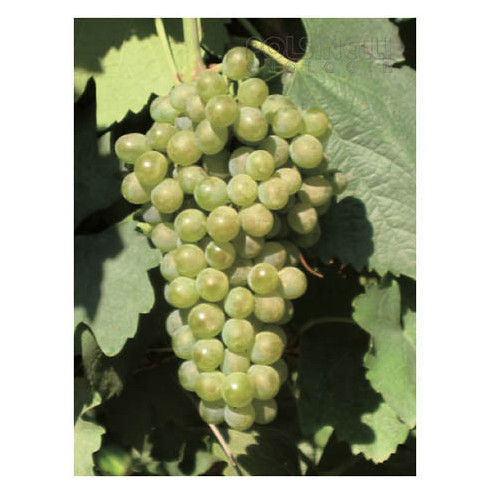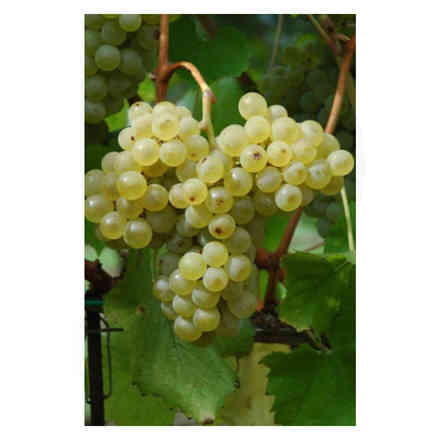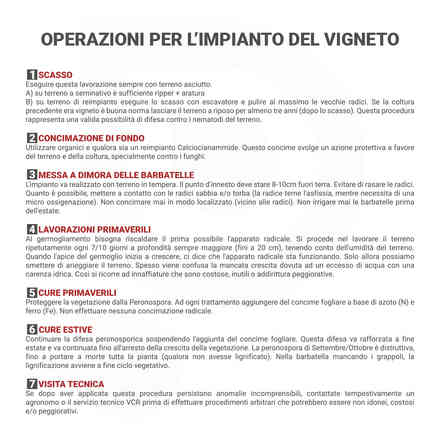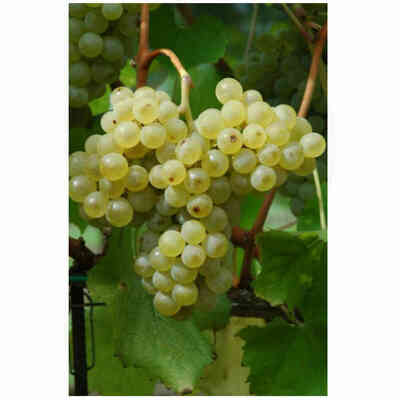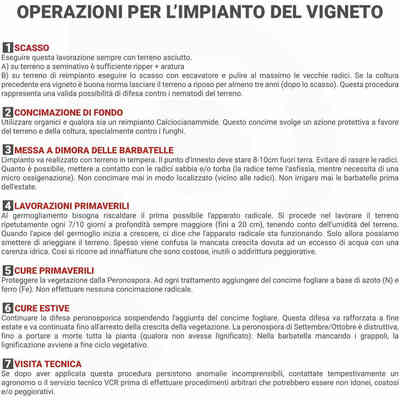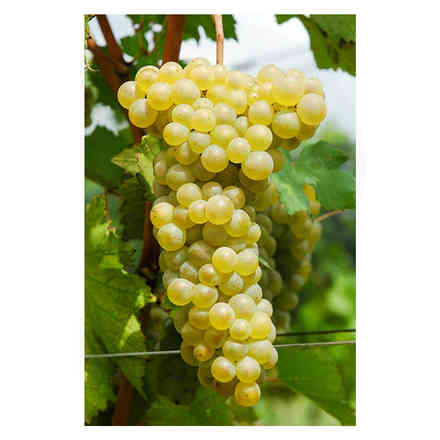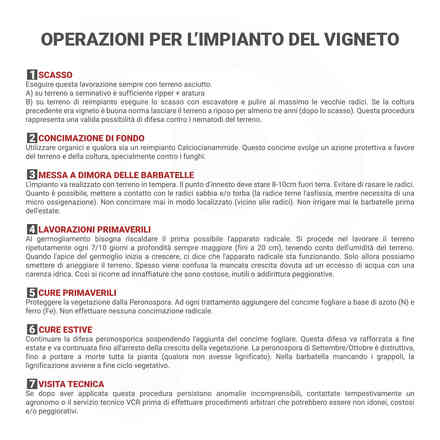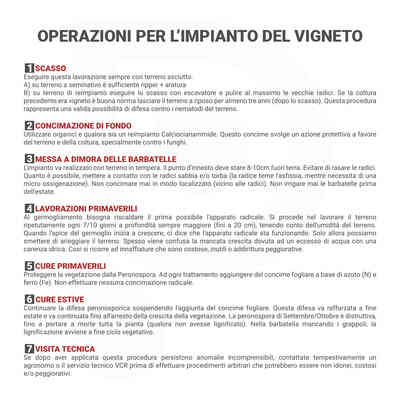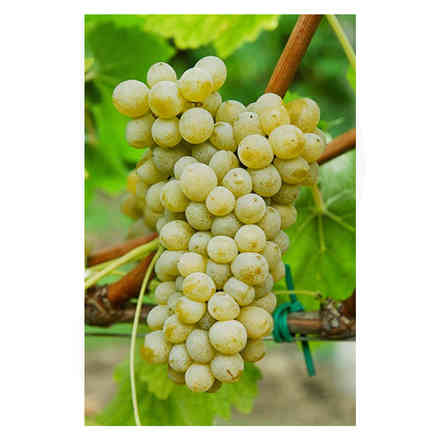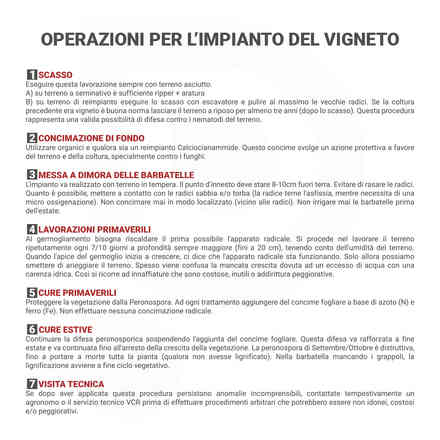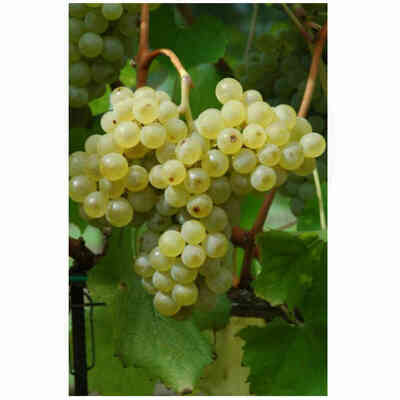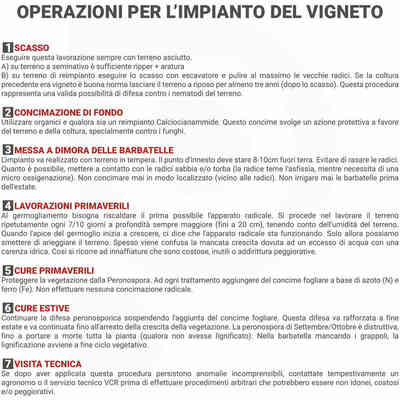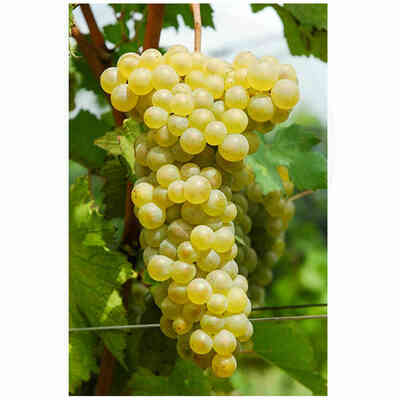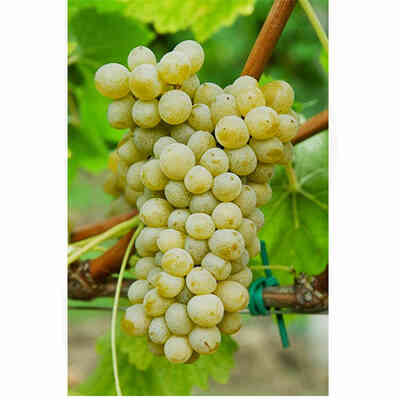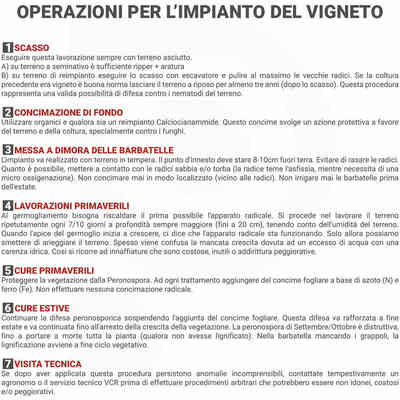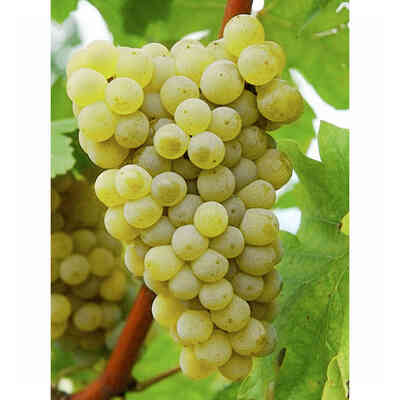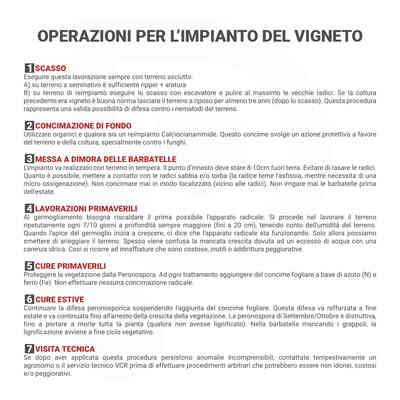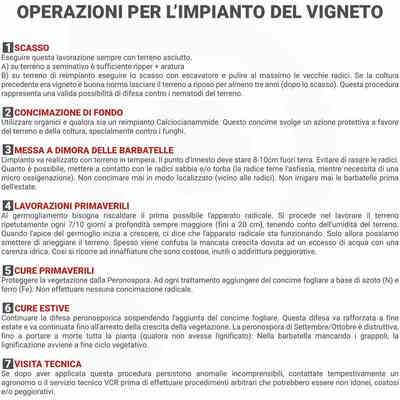Falanghina (10 pieces)
Description
 AUTHORIZED RETAILER
AUTHORIZED RETAILER
Barbatella Falanghina (10 pieces)
Rootstocks: 1103P - K5BB - S04 - 140RU - 420A (We will send the graft carrier available at the moment)
Known since the last century as one of the best vines, of ancient origin, it finds limited cultivation in the Falerno area and in other wine-growing areas in the province of Naples.
- Ampelographics: not a very homogeneous variety as it is confused with biotypes or perhaps similar varieties. Sprout with expanded apex, cottony, light green, with carmine edges. Leaves are medium, trilobed, wedge-shaped, almost entire or relatively trilobed, leaf blade somewhat wavy, medium green, almost smooth, with downy underside. Petiolar sinus lyre-shaped or U-shaped. Cluster: medium-sized, semi-sparse, truncated cone-shaped, winged. Berry: medium, spheroid, yellowish; skin: thick and pruinose; pulp: crisp, sweet, slightly floral flavour.
- Viticultural aptitudes: a vigorous vine with a semi-erect growth habit, it adapts to various soils, even fertile soils, as long as the climate is warm and dry; hilly, well-exposed soils are preferable to enhance the quality of the product.
- Cultivation and pruning: adapts to medium-expansive forms of cultivation and medium-long pruning. Espalier training with careful green pruning is recommended.
- Sprouting time: early.
- Ripening time: medium-late.
- Production: medium and constant.
- Sensitivity to disease and adversity: normal, slightly sensitive to botrytis and sour rot. Incompatibility phenomena were found using rootstocks 101.14 and 3309C.
- Oenological potential: gives a straw-yellow coloured wine with golden reflections, with a pleasant, warm, velvety bouquet and an elegant floral and tropical fruit aroma.
Clones in multiplication: Falanghina VCR2, VCR449.
CULTIVATED AREA IN ITALY
YEAR 1970 1982 1990 2000 2010
HECTARES 1,196 955 646 1,721 3,070
RULES TO PLANT A VINEYARD
1. PLOW
You must perform this operation always with dry soil
A) On arable land is generally sufficient to ripper + to plow
B) On planting soil is generally sufficient to plow with an escavator and to clean the old roots.
If the previous crop was a vineyard, it is a good idea to leave the soil fallow for at least three years (after plowing). This procedure represents a valid possibility of defence against soil nematodes.
2. SOIL FERTILIZATION
Use organics and if it is a reimplantation, use Calciumocyanamide.
This fertiliser has a protective effect on the soil and the crop, especially against fungi.
3.PROPAGATING GRAPE VINE CUTTINGS
The planting should be carried out in temperate soil. The grafting point should be 8-10 cm above ground. Avoid shaving the redices. As much as possible, put sand and/or peat in contact with the roots (the root fears asphyxiation, while it needs a micro-oxygenation). Never fertilize in a localized manner (near the roots). Never water the rooted cuttings before summer.
4.SPRING WORKS
When sprouting, the root apparatus must be heated as soon as possible. Work the soil repeatedly every 7/10 days at increasing depth (up to 20 cm), taking into account the moisture of the soil. When the apex of the bud starts to grow, it means that the root system is functioning. Only then can we stop watering the soil. Failure to grow due to access to water is often confused with a lack of water. This is why watering is used which is expensive, useless or even worse.
5.SPRING CURE
Protect vegetation from Peronospora. To each treatment add nitrogen (N) and iron (Fe) foliar fertilizer. Do not make any radical fertilization.
6.SUMMER CURE
Continue with the defense against Peronospora by suspending the addition of the foliar fertilizer. This defense should be reinforced in late summer and should be continued until vegetation growth stops.
The September/October blight is destructive, to the point of bringing death to the whole plant (if it has not lignified). The rooted vine lacks clusters, so lignification occurs at the end of the vegetative cycle.
7.TECHNICAL VISIT
If incomprehensible anomalies persist after this procedure, contact an agronomist or the VCR Technical Service promptly before carrying out arbitrary procedures which may be unsuitable, expensive and/or worsening.














